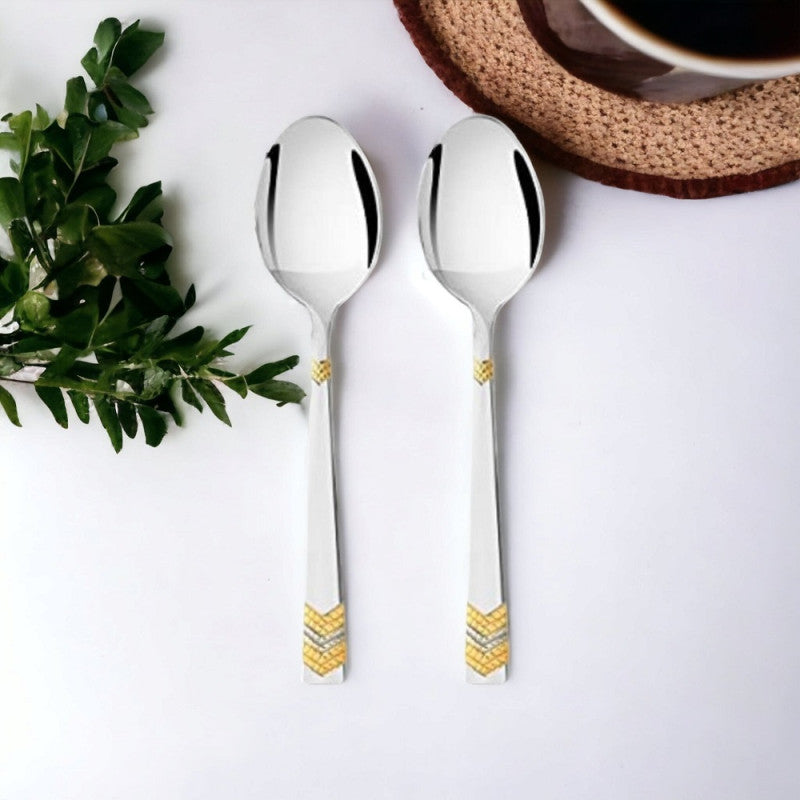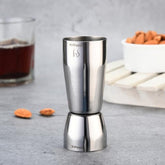Teaspoon vs Tablespoon: Key Differences Every Home Cook Should Know
Whether you're making traditional dal tadka or experimenting with a new recipe, understanding the difference between these two measuring tools is crucial for successful cooking. Measuring spoons are essential tools in any kitchen, but confusion often leads to recipes going wrong. If you've ever wondered why your dish doesn't taste right even after following a recipe, the answer often lies in these simple but crucial differences.
What is Teaspoon?

A teaspoon is a small measurig spoon typically used for measuring small quantities of ingredients. In cooking and baking, a teaspoon (also called a small teaspoon) is a standard unit of measurement, equal to approximately 5 ml. It's typically used for ingredients where precision is crucial, such as spices, salt, vanilla extract, and other flavoring agents. In Indian cooking, teaspoons are perfect for measuring mustard seeds, cumin, turmeric, chili powder, and garam masala—ingredients where too much can easily overwhelm a dish.
For home cooks preparing traditional Indian recipes, teaspoons are a great tool for tempering and seasoning. Using the correct teaspoon measurement ensures that your dish retains its authentic flavor without being overly spicy or overly intense.
What is Tablespoon?
A tablespoon is a large measuring spoon that can hold three times as much as a teaspoon. Also called tbsp or Tbsp, a tablespoon equals approximately 15 ml. Tablespoons are great for measuring large quantities of ingredients, such as oil, ghee, yogurt, coconut milk, and other cooking ingredients that form the base of your dish.
In Indian kitchens, tablespoons are commonly used to measure cooking fats, yogurt, and liquids in curries and gravies. Their large capacity makes them perfect for dishes where you need large quantities and don't need to measure frequently.
Teaspoon and Tablespoon: The Key Differences
Understanding these core distinctions will transform your cooking:
Size and Capacity:
-
Teaspoon: Smaller spoon holding about 5 ml
-
Tablespoon: A Larger spoon holding about 15 ml (exactly 3 times a teaspoon)
Common Kitchen Uses:
-
Teaspoon: Spices, salt, powders, extracts, and small seasoning quantities
-
Tablespoon: Oils, ghee, yogurt, and liquid ingredients in larger amounts
When to Use Each:
-
A teaspoon for flavoring agents, where precision prevents overpowering your dish
-
Tablespoon for base ingredients that form the foundation of your recipe
Accuracy Impact:
-
Using a tablespoon instead of a teaspoon can triple the ingredient amount and ruin your dish
-
Using a teaspoon instead of a tablespoon may leave your recipe incomplete or bland
Teaspoon vs Tablespoon: Quick Conversion Guide
Keep these conversions handy while cooking:
-
1 tablespoon = 3 teaspoons
-
1 teaspoon = ⅓ tablespoon
-
2 tablespoons = 6 teaspoons
-
3 tablespoons = 9 teaspoons
-
16 tablespoons = 1 cup
Why This Matters for Indian Home Cooks
In traditional Indian cooking, accurate measurements are crucial. Imagine tempering your dal—using a tablespoon of mustard seeds instead of a teaspoon can completely alter the flavor and ruin the entire dish. Similarly, when making chutneys, pickles, or masalas, incorrect measurements can ruin the entire recipe.
A tablespoon of salt instead of a teaspoon will make your pickle unpalatable, while too little spice can make your curry bland. That's why understanding the difference between a teaspoon and a tablespoon is crucial for good home cooking.
Practical Tips for Measuring
-
Always level off dry ingredients with a knife for accuracy
-
Fill spoons to the brim with liquids like oil or ghee
-
Invest in a proper measuring spoon set with both imperial and metric markings
-
Double-check your measurements, especially for salt and spices
Master Your Measurements
Whether you're following a recipe from a cooking blog or a traditional cookbook, knowing the correct quantities ensures that your biryani, sambar, or khichdi will turn out perfectly every time. Understand this basic difference, and you'll find your cooking becomes more confident and your results more reliable.
Teaspoon vs Tablespoon: Frequently Asked Questions
1. How many teaspoons equal one tablespoon?
One tablespoon is exactly 3 teaspoons. This is a basic conversion you'll need to remember to measure accurately in your kitchen. So, if a recipe calls for 1 tablespoon of an ingredient and you only have a teaspoon, simply measure out 3 teaspoons.
2. What is the difference between teaspoon and tablespoon in milliliters?
A teaspoon is approximately 5 milliliters (ml), while a tablespoon is approximately 15 ml. Understanding these metric conversions is especially helpful when watching international recipes or cooking shows that use metric measurements instead of imperial units.
3. Can I use a regular spoon from my dining set instead of measuring spoons?
No, you shouldn't use regular dining spoons for cooking measurements. Regular spoons vary widely in size and capacity, which will lead to inaccurate measurements and inconsistent results. Always buy a set of the right measuring spoons so your recipes turn out exactly how you want them.
4. What ingredients are typically measured in teaspoons vs tablespoons?
Teaspoons are used for smaller quantities of spices like turmeric, chili powder, cumin, salt, and vanilla extract. Tablespoons are used for larger quantities of oil, ghee, yogurt, coconut milk, and other base ingredients. In Indian cooking, teaspoons are essential for tempering, while tablespoons work better for larger cooking mediums.
5. Is there a difference between measuring dry ingredients and liquids?
Yes, it is. For dry ingredients like spices and powders, always level the spoon with a knife to ensure accurate measurement. For liquids like oil, ghee, and water, fill the spoon to the brim. This way, the measurement remains consistent whether you're measuring solids or liquids.
6. What happens if I accidentally use a tablespoon instead of a teaspoon?
Using a tablespoon instead of a teaspoon will triple the amount of ingredients in your dish. For salt or spices, this can completely ruin your recipe, making it undrinkable or too spicy. Always double-check your measurements, especially for small amounts of ingredients that have a significant impact on flavor.
7. How do I convert tablespoons to teaspoons quickly?
Simply multiply the number of tablespoons by 3. For example, 2 tablespoons equals 6 teaspoons (2 × 3 = 6). To convert teaspoons to tablespoons, divide by 3. So 9 teaspoons equals 3 tablespoons (9 ÷ 3 = 3).
8. Are measuring spoons the same in every country?
In most Western countries, teaspoon and tablespoon measurements are standard, but there are some variations. The most common measurements are 5 ml for a teaspoon and 15 ml for a tablespoon. However, Australian tablespoons are 20 ml. Always check if you're using an international recipe to make sure it's accurate.
9. Can I use the same spoon to measure different ingredients without washing?
This depends on the ingredients. If you're measuring dry spices one after the other, you can usually proceed without rinsing. However, if you're measuring a dry ingredient after a liquid like oil, or a sweet ingredient after salt, it's best to wipe or wash the spoon to prevent flavor loss and ensure accurate measurement.
10. What's the best way to store measuring spoons?
Keep your measuring spoon set in a drawer, hanging rack, or kitchen utensil holder where they're easy to find. Keep teaspoons and tablespoons together so you always have both handy while cooking. Some cooks like to hang their measuring spoons on a magnetic strip near the stove for quick access while cooking.









